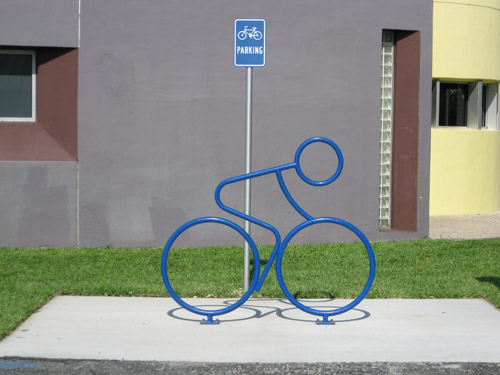 Not long ago my colleague Phil Hayward and I tackled a series of case studies for an editorial supplement on how parks are helping in the fight against obesity. We interviewed park leaders in two cities in Florida, an M.D. and university professor in Denver, and a programming specialist in Las Vegas. We heard how grant money is being used to help urban Indians make healthy lifestyle changes, how disabled veterans are being engaged in fitness programs through an emphasis on fun and socializing, how a feeding program is being combined with education about overall wellness, and how a city’s transportation department is joining forces with parks and rec to promote trails and bike-riding.
Not long ago my colleague Phil Hayward and I tackled a series of case studies for an editorial supplement on how parks are helping in the fight against obesity. We interviewed park leaders in two cities in Florida, an M.D. and university professor in Denver, and a programming specialist in Las Vegas. We heard how grant money is being used to help urban Indians make healthy lifestyle changes, how disabled veterans are being engaged in fitness programs through an emphasis on fun and socializing, how a feeding program is being combined with education about overall wellness, and how a city’s transportation department is joining forces with parks and rec to promote trails and bike-riding.
As a longtime reader of books and blogs on health, nutrition, and the nation’s worsening overweight problem, I thought I knew a lot about obesity. The people I talked with, however, were so passionate and creative in their approaches to helping people that I realized I knew much more about the nature of the problem than I did about the solutions offered by individuals and communities.
Here are five things I learned—and where I learned them from.
1. Something as seemingly insignificant as putting bike racks near public transportation stops and high-density apartment complexes influences people’s physical activity levels across an entire city population. (Andrea Ramos, North Miami)
2. Many people (especially many minorities in this country) really are unaware that small changes can lead to better, longer, healthier lives. They need to be schooled and coached and encouraged. There are ways to help people overcome obesity (and the chronic diseases that go with obesity) without making them feel stigmatized. (Dr. Kelly Moore, University of Colorado, Denver)
3. Sensitivity and creativity can overcome the “exercise anxiety” of many people with disabilities—and can lead to a well tailored fitness plan and happy participants. Even when they begin a program, for example, by saying they only want to play Bingo! (Bernard Preston, Las Vegas)
4. Entire communities can make small dietary changes together around a single excellent book like Eat This, Not That. (Kerry Bittner and Polly Brannon, St. Petersburg, Florida)
5. Public perceptions of safety can make or break a community’s efforts to encourage greater physical activity among its residents. The bike trail may be beautiful, and it may even be safe—but if the people who live around it don’t believe it is safe, it may as well not have been built. (John O’Brien, North Miami).
People like Ramos, Moore, Preston, Bittner, O’Brien, and Brannon apply ingenuity and compassion to helping people fight obesity. They serve as a refreshing reminder that, in the battle against this national epidemic, many small changes at the community level can have an impact.
Maureen Hannan is the Senior Editor for Parks & Recreation magazine.

